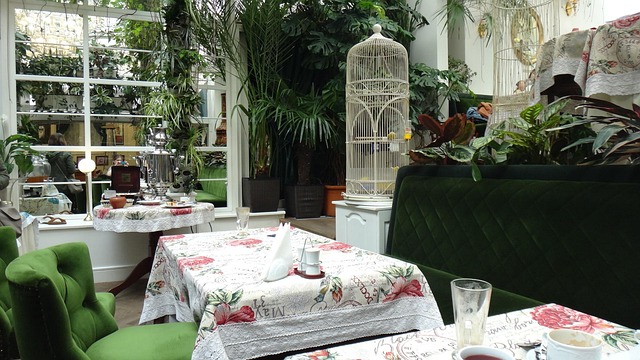
Summary
This article provides a comprehensive guide to selecting and cultivating plants within an orangery. It explores the historical context of orangeries, emphasizing their evolution from symbols of prestige to versatile garden extensions. The article offers practical advice on plant care, emphasizing ventilation, humidity, and watering techniques, and suggests suitable plant varieties for different orangery environments.
Elegancia: Beautiful orangeries, increased property value.
** Main Story**
So, you’re thinking about turning your orangery into a lush, green paradise? Smart move! Orangeries are fantastic, offering that perfect blend of indoor comfort and connection with nature. They really do blur the lines, don’t they? I mean, what’s better than sipping a coffee surrounded by greenery, even when the weather outside is frightful?
But before you dive headfirst into buying every plant that catches your eye, let’s break down how to make the most of your orangery.
Understanding Your Orangery’s Unique Vibe
First things first, you need to get to know your space. I can’t stress this enough; it’s like getting to know someone before you start dating. What are its quirks? What are its strengths?
- Temperature: Is your orangery heated, or does it fluctuate with the outside temps? An unheated orangery gives you more options with hardy, temperature-tolerant plants, so that is something to consider. Heated though, and you can get away with keeping some tender plants alive year round.
- Light: Orangeries are usually blessed with loads of sunlight, which is great for most plants. That said, you might need to think about shading during those scorching summer months to avoid burning delicate leaves.
- Size and Layout: Space is key! A sprawling vine needs, well, sprawling space. Smaller plants are perfect for shelves, windowsills, or hanging baskets.
Once you have a solid feel for what your orangery can offer, you’re ready for the fun part.
Choosing Your Green Companions
Okay, now we get to talk plants. What kind of vibe are you going for? Here are some suggestions that always work well:
- Citrus Trees: These are basically an orangery’s historical soulmates. Oranges, lemons, calamondin…the works! The smell of citrus blossoms is intoxicating, and who doesn’t love fresh fruit? Plus, dwarf varieties are perfect if you’re short on space. Though, make sure you keep an eye out for pests; citrus trees, while beautiful, can be a bit needy.
- Flowering Plants: Bougainvillea, mandevilla, plumbago – picture a riot of color and fragrance! They can add so much interest.
- Fruit Trees: Cherries, figs, peaches…imagine picking fresh fruit in your own little indoor orchard! They love the protected environment an orangery offers.
- Palms, Succulents and Cacti: Okay, maybe you’re more of a low-maintenance type. These guys are tough and add a cool, exotic touch. Plus, the variety is insane. And let me tell you a story, I once had a succulent, and went on holiday for a month in winter and forgot to ask my neighbour to water it. On my return, the thing was still alive! These guys don’t need much.
- Herbs and Vegetables: Why not grow your own salad ingredients? Tomatoes, peppers, strawberries…a mini kitchen garden right at your fingertips. So convienent, I find.
- Scented plants: Stephanotis floribunda and Jasminum azoricum are excellent choices for adding fragrance to your orangery. I had Jasminum in my conservatory once, the smell was sublime.
Keeping Things Happy and Healthy
Choosing the right plants is just the first step, though. You’ve got to keep them happy. Think of it like providing for the plants. The plants need to be looked after, they can’t talk for themselves!
- Ventilation: Stuffy air is a plant’s worst nightmare. Open those windows and doors when you can, and maybe invest in some roof vents for year-round air circulation. Stale air leads to fungal diseases and pests, trust me on this one.
- Humidity: Many plants are humidity-lovers. Misting, humidifiers, or even a tray of damp pebbles can do wonders. You’ll see the difference, in how glossy the leaves look, for example. I always find you can tell when a plant feels loved.
- Watering: Overwatering is a common mistake, especially in winter. Let the soil dry out a bit before you soak it, and make sure there’s good drainage to prevent root rot.
Seasonal TLC
Just like our skincare routines change with the seasons, so should your plant care.
- Summer: Shade is your friend during the hottest hours. And don’t forget to water more often!
- Winter: Ease up on the watering, and protect those tender plants from frost, especially if your orangery isn’t heated. In addition, you may need to move tender plants to a warmer location if necessary.
Making it Your Own Oasis
Finally, let’s talk about making your orangery a place you actually want to be. It’s not just about the plants, is it?
- Furnishings: Comfy seating is a must. A table for your morning coffee? Yes, please!
- Decor: Planters, sculptures, lighting…go wild! Make it a space that reflects your style.
So, there you have it! With a little planning and care, you can transform your orangery into a thriving, inviting garden that you can enjoy all year long. Get out there, get your hands dirty, and create something beautiful. Happy gardening!
Remember, this is March 12, 2025, so this info is pretty up-to-date. But, gardening is always evolving, and plant availability can change, you know? Just something to keep in mind.


Be the first to comment